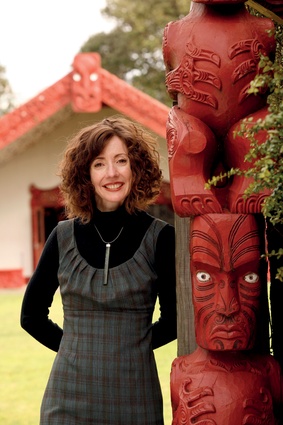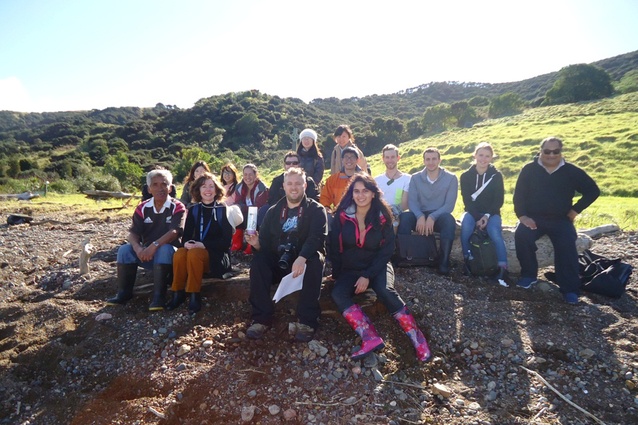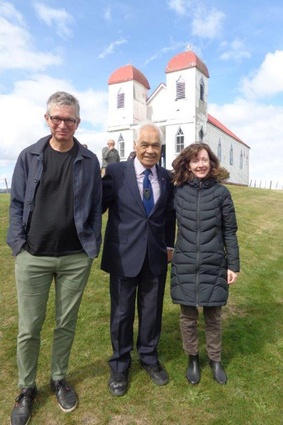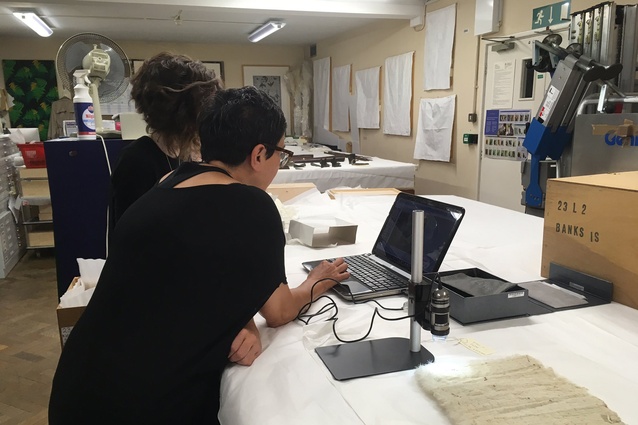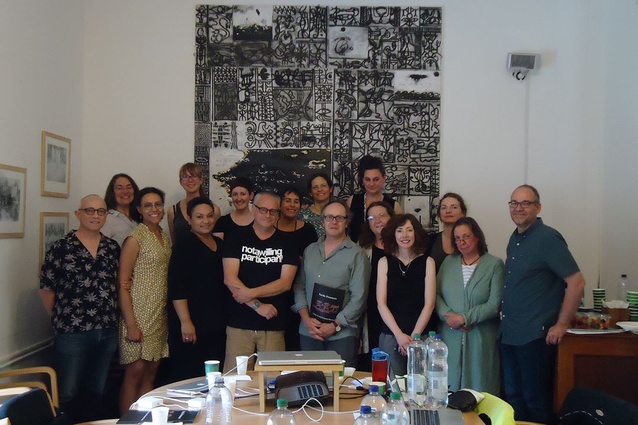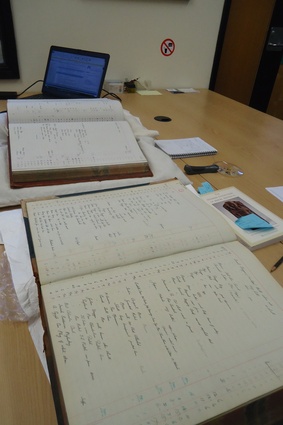Bridging the gaps: Deidre Brown
Dr Deidre Brown was recently named as the next Head of School at the University of Auckland School of Architecture and Planning where she has served on staff for well over a decade. She began her academic career at the University of Canterbury as a lecturer in the Art History Department. She returned to her native, Auckland, in 2003 and has since penned several influential books about art and architecture with a focus on Māori art.
Deidre Brown, of Ngāpuhi, Ngāti Kahu, is of both Māori and Pākehā descent and may well be the first indigenous woman to lead an architectural school in the world. In a time when the discussion of gender and ethnic diversity is at the forefront, Deidre’s appointment is a shining light for the industry. She will officially begin her duties as Head of School on 1 January 2019. She took the time to speak to us about how she got in to academia and what her hopes are for the school and the industry as a whole.
ArchitectureNow: Let’s start at the beginning. How did you get involved with architecture?
Deidre Brown (DB): I think I decided to be an architect when I was 11. I had a cousin who was doing technical drawing and I asked him one day, “What do you do with that?” He said, “You can become an architect.” And I said, “What’s that?” And once he told me I thought, that is what I want to do.
I’d always been interested in making houses out of paper and blocks and thinking about space. From then on I got set on a direction to do whatever I needed to do to get in to architecture school.
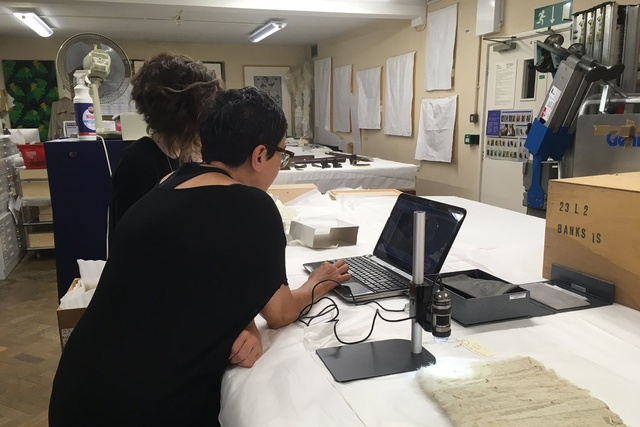
ArchitectureNow: You did all of your degrees at the University of Auckland so you’ve kind of come full circle. What was it like to study there at the time?
DB: Thinking about the types of people we had teaching there: we had Claude Megson and John Goldwater, and I think Allan Wild was finishing his time as the dean. When I went through – I started in the late 1980s, just after the stock market crash – people were beginning to re-evaluate what architecture was.
It was the beginning of postmodernism. Mark Wigley had gotten his big break with his deconstruction exhibition overseas, so there was this intriguing overlap between very late modernism, regionalism and postmodernism. At the school it was a very theoretical form of postmodernism, too. When we say “postmodernism” in Auckland you think of all kinds of glib columns and pastel colours, but no, everyone was reading Derrida and Heidegger. It was a real crossover period.
It was also coming up to the sesquicentennial of the Treaty of Waitangi – the 150th anniversary was 1990. So, Māori concerns were being discussed as well.
ArchitectureNow: What did that mean for you? I imagine you must have been one of the few Māori in the architecture school.
DB: In my intermediate year I studied New Zealand history and did the first part of Māori studies as well, and I was taught by people like Ranginui Walker; there was this sense that, perhaps, change was in the air.
You had people like Mike Austin talking about Māori architecture and Mike Linzey teaching about Māori architecture from a theoretical perspective. But, at that time, there weren’t a lot of settlements yet from the Waitangi tribunal, so there wasn’t that impetus for change that there is now.
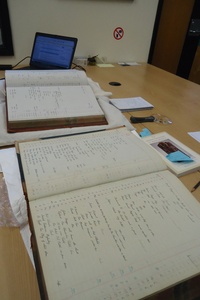
Even the thought that Māori architecture could be a thing that might be addressed at the School of Architecture was amazing, though. At that stage it was just about understanding, or putting into an architectural discourse, what Māori architecture was in terms of its history and the way space was used and how it was distinct from Western uses of space.
ArchitectureNow: When did you start thinking you would follow the path of academia?
DB: Potentially because of the stock market crash, I remember Allan Wild said when we started that we’d all be successful studying architecture but not necessarily as architects. There was a sense that academia was a potential career and that might be a way that we could influence architecture. People in my year and the years around me, a number of them, went in to teaching. That formed the foundational New Zealand staff at Unitec, Victoria University of Wellington, the School of Architecture at University of Auckland, and also Auckland University of Technology as well.
ArchitectureNow: Did you ever think about going in to practice?
DB: That was a very serious consideration. I think I might have been one of the few students who was offered a job at the end [of my studies], because there were so few jobs. I didn’t take it, though. By then, I’d been persuaded by Mike Linzey to come back. He’d seen an essay that I’d done in fourth year on Rātana architecture and he said, “There’s a PhD in this.”
I thought that could be interesting and I went home and asked my parents. We didn’t have a lot of money and I was still quite dependent on living at home and I remember saying to my parents, “I don’t think I’m going to be an architect, I think I want to do a PhD.”
My mom asked what I would end up being when I finished. I don’t know why, but all I could think of to say was, “Well, I’d be called Dr Brown at the end.” My mom then said, “Right, when can you start!” So, she was sold after that.
ArchitectureNow: And what was your PhD on?
DB: It was called Mōrehu Architecture. It was series of chapters, and the last chapter was on Rātana architecture. It looked at Māori architecture between about 1850 and 1950 starting off with the King movement – the Kīngitanga. It explored a series of prophetic movements and how each built upon the others with their architecture.
It kind of filled the gap, for me anyway, between what might be perceived to be customary Māori culture – what I had been taught about in first year by Ranginui Walker – and what I actually experienced in the household that I was raised in, which was a different sort of Māori to what I… how can I describe it? Mōrehu is the word that Rātana use to describe its followers and it means survivor.
So, a lot of those people that went through those prophetic movements as followers – and it was all over the north island and the south island – they were people who had been dispossessed through the land confiscation or the public works act. They’d lost their land, they’d eventually move to cities. So, it kind of, for me, explained where we were as Māori people – me and my mum and her family.
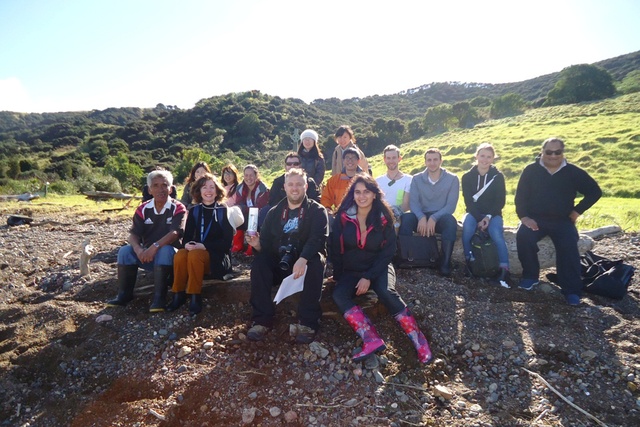
ArchitectureNow: Was that your family’s history, then? Had they been, sort of, pushed out?
DB: Well, we are from up north, so it had been a real struggle to hold on to the land, but we did. The Rātana church had been very useful when it came – in the 1920s – to talking about land rights issues and the treaty of Waitangi and equal access to education and to healthcare, which was a real issue, and proper political representation.
I read stories about people who had different iconographies that weren’t like meeting house buildings, and they had other kinds of buildings which were more like our Marae up north, which was plain. They were very future focused and thinking about what was going to happen next. Those stories resonated with me.
So, my PhD kind of bridged the gaps among the customary world, the Mōrehu world and the contemporary world. Lots of people had been writing about the contemporary world and the customary world, but less about the Mōrehu world. Although people like Judith Binney and Roger Neich were publishing at that time about Ringatū and Rua Kenana, so it was supported by other types of scholarship.
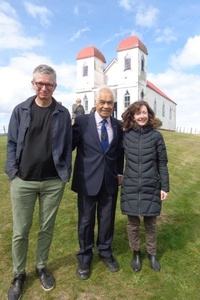
ArchitectureNow: Let’s talk a bit about diversity within the architecture and design field. I find it really interesting that a lot of iwi have women leading architectural projects. So, you wind up getting a different type of developer or commissioner or architecture and I wonder how that will affect things in the future. You’re in a unique position as a woman of Māori heritage. What have you noticed around that?
DB: It’s interesting because you look at Jasmax and Warren and Mahoney and other companies that now have entire Māori divisions because the Māori client groups want to be speaking in te reo with other Māori people or to other people who can understand Māori values. So, that division is there not just to perform that task but also to educate the rest.
I’ve had students who are Mandarin speaking and they work in practices and they’re often working directly with developers that want to speak in Mandarin and talk about their concepts of commerce and need. It’s fortunate, I think, that we do have this cultural diversity and gender diversity within the school – and it’s not just our school it’s the other schools as well – because it is meeting a need.
In terms of gender diversity, architects are often quite open-minded people but people’s expectations of what architecture and urban design should be also influence what gets made. So, it’s a complex issue.
ArchitectureNow: Is there anything else you wanted to talk about?
DB: When you were asking about the role, I just wanted to highlight the work that we’re already doing, and that I want to maintain and develop further, in sustainability, heritage, digital, and housing and supporting infrastructure. We are the school of architecture and planning, after all. I’ve been mainly talking about the architecture side of things but there’s also urban design and planning too. It’s a very strong design school. The students lately have been winning international awards, and we have a lot of diversity among the students as well.
We’re focusing a lot on ways to get bigger and better funding for our research as well so that we can do bigger and better research. And that’s not just staff research, these projects involve students and they involve the creation of new types of subjects that are more forward and future facing as well.
Our goal would be to move more of our postgraduates to working on these bigger projects. Even if their intention is to go out in to practice, being able to take those skills – whether they’re interested in materials or interested in heritage – and being able to work on a big, important project allows them to take that learning out in to practice and then create networks between themselves.

